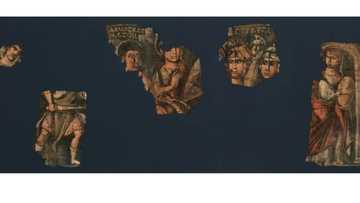Donkey domestication happened 7,000 years ago in Africa: DNA study

Source: AFP
PAY ATTENTION: Click “See First” under the “Following” tab to see Legit.ng News on your Facebook News Feed!
Despite transforming history as beasts of burden essential for transporting goods and people, the humble donkey has long been woefully understudied.
But scientists on Thursday took a big step towards clarifying the species' origins with a comprehensive genomic analysis of 238 ancient and modern donkeys, finding they were likely domesticated in a single event in eastern Africa some 7,000 years ago.
The paper, published in the journal Science, was the result of an international collaboration led by Evelyn Todd at the Centre for Anthropobiology and Genomics of Toulouse, France.
"Donkeys subsequently spread into Eurasia from ~2500 BCE, and Central and Eastern Asian subpopulations differentiated ~2000 to 1000 BCE," the team wrote.
Eventually, lineages from Europe and the Near East backbred into western African donkey populations.
Horses, their equid cousins, are believed on the other hand to have been domesticated twice -- the first time around 6,000 years ago in the western Eurasian steppes.
PAY ATTENTION: Subscribe to Digital Talk newsletter to receive must-know business stories and succeed BIG!
The donkey DNA study included three jennies (females) and six jacks (males) from an ancient Roman site in France who were closely interbred.
The authors suggest that Romans bred improved donkey bloodlines to produce mules that were essential to sustaining the military and economic might of the empire.
Donkeys were vital to the development of ancient societies and remain important in middle and lower income countries, but lost their status and utility in modern industrial societies, perhaps explaining why they were neglected by science.
Source: AFP


